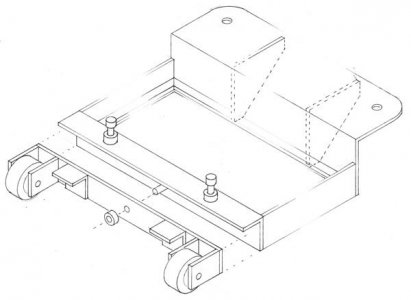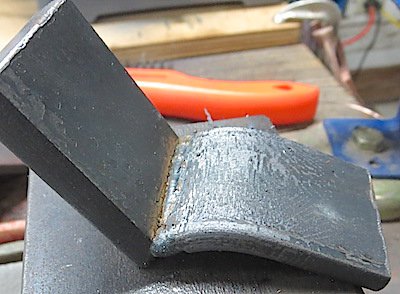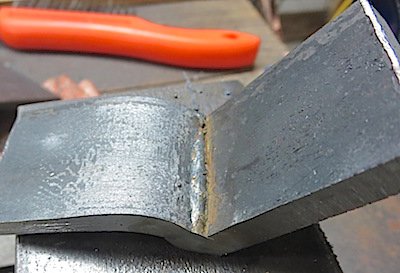- Joined
- Mar 24, 2013
- Messages
- 48
Frank that is correct about wire diameter, use the smaller size. The problem is you are past the current carry capacity of 030 wire, it is stable to maybe 160 amps, it cannot handle 200 amps,. At 70 amps you are shy of the proper amperage of 200 amps by three times. You should be at 4400 watts for 1/4 steel. If your arc is stable at 70 amps you are probably at about 13 volts which is good for 22 gauge metal or 900 watts.
With 1/4 inch steel your two wires that will handle 200 amps are 035 and 045 diameter wires. And you are correct, you should choose the 035 wire.
Professionally, we don't short circuit 1/8 inch and over, we use pulse. On small weldments, short circuit is okay on thicker steels as the part gets hot and the weld has time to do its thing. On large weldments the mass cools the weld to fast and lots of cracking can and does accur. Pulse puts tremondous amounts of heat into the weldment virtually eliminating cracking. On weldments over 1/2 inch thick, we do not use bare wire pulse. We use flux cores, 1 and 8 we us a lot.
Chuck
With 1/4 inch steel your two wires that will handle 200 amps are 035 and 045 diameter wires. And you are correct, you should choose the 035 wire.
Professionally, we don't short circuit 1/8 inch and over, we use pulse. On small weldments, short circuit is okay on thicker steels as the part gets hot and the weld has time to do its thing. On large weldments the mass cools the weld to fast and lots of cracking can and does accur. Pulse puts tremondous amounts of heat into the weldment virtually eliminating cracking. On weldments over 1/2 inch thick, we do not use bare wire pulse. We use flux cores, 1 and 8 we us a lot.
Chuck



